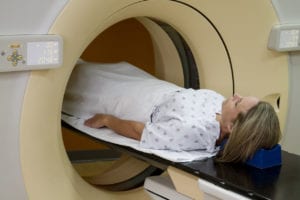
Magnetic resonance imaging (MRI) is a type of scan that produces images of the inside of the body. MRIs are conducted using a machine that uses radio waves and magnetic fields. MRIs help doctors diagnose many forms of cancer, spine conditions, heart problems, joint problems, and injuries.
During an MRI, you will be placed inside a long tube-like machine. While there are open MRI machines, the closed MRI machine produces much greater detailed images, which is why many doctors prefer it. Furthermore, some conditions or illnesses require a closed MRI for better results, so getting an open MRI is not always an option. Being in an MRI machine can trigger feelings of claustrophobia for some people. Moreover, the loud sounds an MRI machine makes can also trigger anxiety for some.
Uncomfortable feelings aside, an MRI is a diagnostic test that can save your life. It can detect illness and disease in its early stages when the condition still responds well to treatment. The life-saving benefits make it worthwhile. However, an MRI doesn’t have to be an uncomfortable experience for you.
Here are 6 tips and tricks for reducing claustrophobia during an MRI.
1. Learn About The Machine and Process
People have a tendency to build things up in their heads when they don’t know what to expect. Educating yourself by discussing what to expect during the procedure with your doctor or doing your own research can ease your worries. By learning about the MRI, what exactly to expect, and possibly seeing an MRI take place, you will feel better about the test when it’s your turn to get it done.
2. Talk To The MRI Technician Beforehand
Another way to enter a state of relaxation is by speaking with the technician. Radiologists and technicians care about your comfort and understand all too well how anxiety-inducing a diagnostic procedure can be. Discuss your concerns with the technician and see what can be done to keep you calm during the MRI.
3. Take A Loved One With You
Some diagnostic centers allow patients to have a loved one with them. It makes a big difference in having someone you trust with you during the procedure. While they will not be allowed to stand right next to you during the MRI, they can be nearby to greet you when you go in and come out.
4. Wear Earplugs
MRI technicians can provide you with earplugs to block out the noises of the MRI machine if it’s an issue for you. Some technicians can even play music to distract patients from the unfamiliar sounds.
5. Use Relaxation Techniques
Breathing techniques, counting, and visualizing a relaxing, happy place can help you keep calm during the test. Other options include sedation and anti-anxiety medication, however, you need to check with your doctor beforehand if this is an option for you.
6. Ask for a 3T MRI
Traditional MRI may not be your only option. Ask your doctor about whether an 3T MRI is a possibility for you. This technology not only makes it easier to capture accurate images, it also works faster than the traditional MRI, reducing the test time in half in some cases. In addition, the machine is also much less confining since the magnet bore is shorter than in a traditional MRI machine. Patients report less anxiety and a better overall experience with the 3T MRI machine.
Diagnostic Facility in The Bronx, NY
Starling Diagnostics offers 3T MRI to our patients, which works faster than traditional MRIs and cuts short the duration of the test. We want to make you feel as comfortable as possible during your diagnostic testing. Talk to us about your concerns, and we can give you options to ease your anxiety and fears.
If you are interested in a more pleasant MRI testing experience, call Starling Diagnostics at (718) 319-1610 to schedule your procedure or request an appointment online now. Our board-certified radiologists and staff look forward to serving you in our diagnostic facility in The Bronx.
